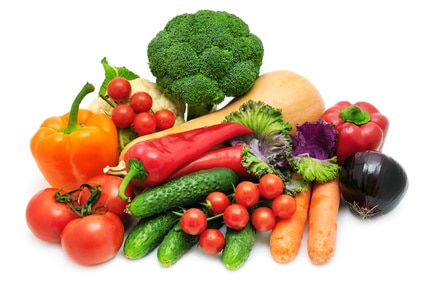 When you cut fresh carrots, do you dispose of the tops? What about the stems from herbs or the peels from citrus? Do you pitch leftovers and produce that looks past their prime? It is estimated that by the time we peel, separate, skin, and trash iffy produce, we can actually end up throwing away up to 40 percent of our purchases! That means that almost half the money paid for produce at the grocery store or farmer’s market ends up in the garbage. I’m going to share some great tips with you below – but remember this mantra: you can freeze and use nearly every produce item – except for lettuce.
When you cut fresh carrots, do you dispose of the tops? What about the stems from herbs or the peels from citrus? Do you pitch leftovers and produce that looks past their prime? It is estimated that by the time we peel, separate, skin, and trash iffy produce, we can actually end up throwing away up to 40 percent of our purchases! That means that almost half the money paid for produce at the grocery store or farmer’s market ends up in the garbage. I’m going to share some great tips with you below – but remember this mantra: you can freeze and use nearly every produce item – except for lettuce.
Way to Save #1:
Portions of produce often get thrown away because either we don’t realize they are edible or because they don’t look good anymore. Some ideas to stem this waste…
– Recipes often call citrus zest or juice, so freeze those peels or extra squeezes from limes, lemons, grapefruit and oranges for later use.
– Try carrot tops, celery leaves, and other greens you might usually throw away as nutritious salad greens.
– Add wilted or slightly less ripe lettuces to soups, stews, stir-fry, and pasta dishes for a sweeter alternative to spinach.
– Don’t ditch produce just because it looks bad or bruised; often it will still be tasty. (Think bananas with brown spots.) Even if produce is overripe, it can still be used in things where a softer texture doesn’t matter – such as smoothies, jams, cakes, cobblers and breads.
Way to Save #2:
Plan more than one meal with the same produce. Sometimes all you need is half of a bell pepper, or only a portion of a head of lettuce, and then are left with the remainder. Failing to plan for these leftovers results in pieces going in the trash after languishing on the refrigerator shelf for a week. Here are two idea starters for using the same ingredients, then making two different preparations:
– One night, make salad with fresh lettuce, peppers, carrots, onion, snow peas, and more. While dicing for the salad, prepare nearly all the same ingredients for stir-fry the following night.
– Chop ingredients for fajitas, such as bell peppers, onion, fresh tomatoes, and lettuce. Simmer the extra with tomato paste and herbs and spices for a robust homemade pasta sauce.
Way to Save #3:
Don’t scrap your scraps! Even with just a little of this and a little of that, you can make something new. Some popular options include:
– Veggie “pickles”: You can pickle just about any vegetable. Carrots, peppers, beans, zucchini, even cauliflower get a whole new life with pickling.
– Shepherd’s pie: The great thing about shepherd’s pie is there are really no specific rules. Throw in what you have, make a smashing gravy, and you’re in business.
– Omelets, frittatas or quiches: Who says you have to have breakfast ingredients for egg dishes?
– Breads: Most recipes don’t call for a lot of produce. Bake up apples, peaches, zucchini, squashes, oranges, apricots, numerous berries, and more.
– Veggie or fruit chips: Dehydrated or baked produce makes for yummy snacks.
– Veggie stocks and broths: “Leftover” ingredients such as corn cobs, carrot nubs, diced onion, herb stems, and more are packed with flavor you can capture in savory broths.


